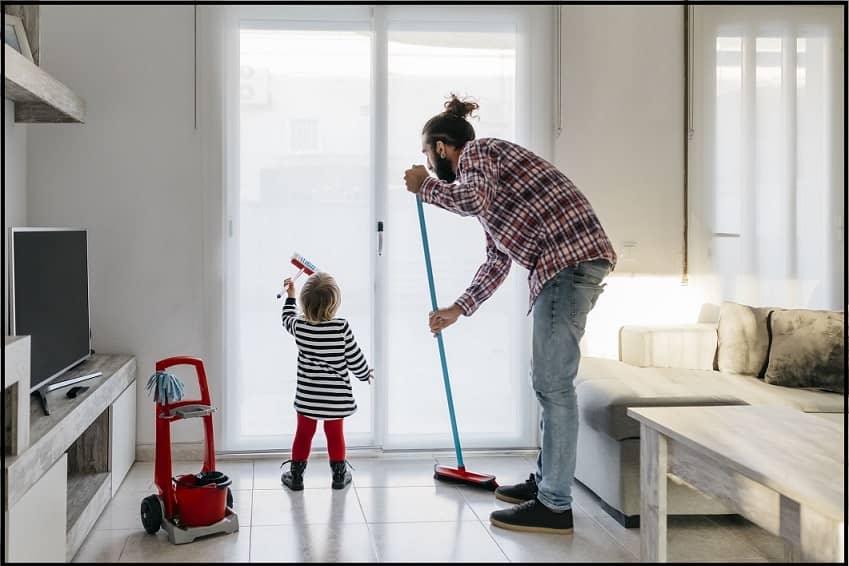Hidden Havens of Grime: The Most Overlooked Dirty Spots in Your Home

While we all strive to keep our homes clean and hygienic, certain areas tend to harbor more dirt and germs than others, often going unnoticed in our regular cleaning routines. This comprehensive exploration will reveal the common yet frequently overlooked nooks where grime and microbes lurk, guiding you to a cleaner, healthier living space with effective germ and allergy control measures.
The Unseen Adversaries: Spotting the Covert Culprits
A clean-looking home can deceive the eye, for the true adversaries of cleanliness are microscopic and insidious. Regular cleaning practices may skim the surface, but it’s the deep, detailed cleanse that roots out the dirtiest places in your home. To achieve this, one must be diligent, informed, and sometimes, a bit investigative.
The Kitchen Conundrum: More Than Just Dishes and Countertops
Often considered the heart of the home, the kitchen is also a hotbed for bacteria due to the constant handling of food. Surprisingly, it’s not just the trash can or the sink that are the dirtiest. Smaller, frequently touched items like the refrigerator handle, cutting boards, and kitchen sponges can host a multitude of germs. These items require regular disinfection to prevent the spread of bacteria.
The Bathroom: Beyond the Bowl
The bathroom is a known harbor for bacteria, but it’s not just the toilet that requires attention. Toothbrush holders, faucet handles, and shower curtains are prone to microbial buildup. Regular cleaning with disinfectant, along with frequent laundering of any washable items, can mitigate the unseen threats lurking in these damp environments.
Personal Gadgets: The Techy Territories of Germs
Our personal gadgets, which we handle incessantly throughout the day, can be a playground for pathogens. Mobile phones, remote controls, and computer keyboards are high-touch surfaces that seldom see a cleaning cloth. Wiping these devices with appropriate cleaners can significantly reduce the transfer of germs to your face and surroundings.
The Living Room: Where Dust and Allergens Congregate
The living room, a gathering place for family and friends, also gathers a significant amount of dust and allergens. Upholstered furniture, carpets, and even indoor plants can trap dust and pollen, affecting air quality. Regular vacuuming, dusting, and plant care are essential for maintaining a tidy living space and ensuring better air quality for everyone.
Pet Areas: The Furry Friends’ Fiefdoms
Pet bowls, beds, and toys are not just cherished by our furry friends but are also beloved by bacteria. These items should be washed regularly to prevent the growth of mold and bacteria, which can affect both pet and human health. Using pet-safe disinfectants and laundering pet bedding frequently can help maintain a hygienic environment.
The Laundry Room: A Cycle of Contamination
The washing machine, especially if often running at low temperatures, can become a breeding ground for germs and mold. Periodically, it’s important to run a hot wash with a machine cleaner or bleach. Don’t forget the laundry basket, where damp clothing can contribute to mold growth, requiring regular cleaning.
High-Traffic Touchpoints: The Germ Superhighways
Doorknobs, light switches, and handrails are touched multiple times a day by different members of the household. These high-traffic touchpoints can transfer germs quickly throughout the home. Incorporating the disinfection of these areas into your daily routine can help minimize the spread of germs.
The Hidden Zones: Out of Sight, Not Out of Mind
Areas behind and under furniture, along with the tops of doors and picture frames, are easy to miss but can collect significant dust and grime. Seasonal deep cleaning should include moving furniture to vacuum and dust these hidden zones thoroughly.
Uncovering and addressing the dirtiest places in your home isn’t just about meticulous cleaning; it’s about creating a blueprint for a healthier living environment. By shining a light on these commonly neglected areas and establishing a cleaning regimen that includes them, you can significantly reduce the presence of dirt and bacteria in your home. A home that’s clean, both on the surface and deep down, is a sanctuary for well-being and peace of mind.
